Hey there, Georgia peeps! 🍑 You love the state’s lush forests, sparkling rivers, and buzzing wildlife, right?
Well, there’s a sneaky gang of invaders, plants, bugs, and critters, crashing the party and causing chaos in our ecosystems.
These 25 invasive species are spreading like wildfire, outcompeting our native plants and animals, and even messing with our crops and backyards.
1. Japanese Beetle (Popillia japonica)
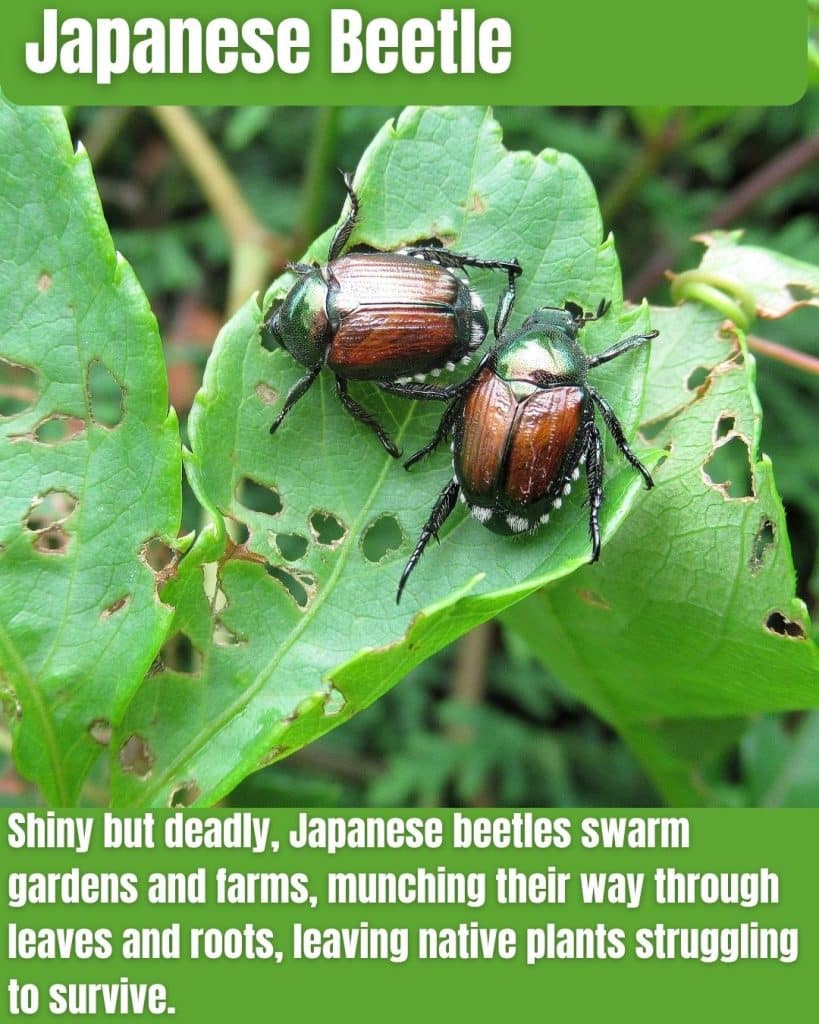
- Adult Japanese beetles are about ½ inch long with shiny metallic green bodies and coppery wing covers, making them easy to spot.
- They feed on over 300 types of plants, from roses and grapes to maples and corn, causing major damage to gardens and crops.
- Larvae live underground feeding on grass roots, often killing lawns and weakening turf in the process.
These shiny green pests are like the ultimate party crashers! They munch on your roses, crops, and trees like it’s an all-you-can-eat buffet.
Introduced from Japan, they’re defoliating Georgia’s gardens faster than you can say “bug off!”
2. Kudzu (Pueraria montana var. lobata)
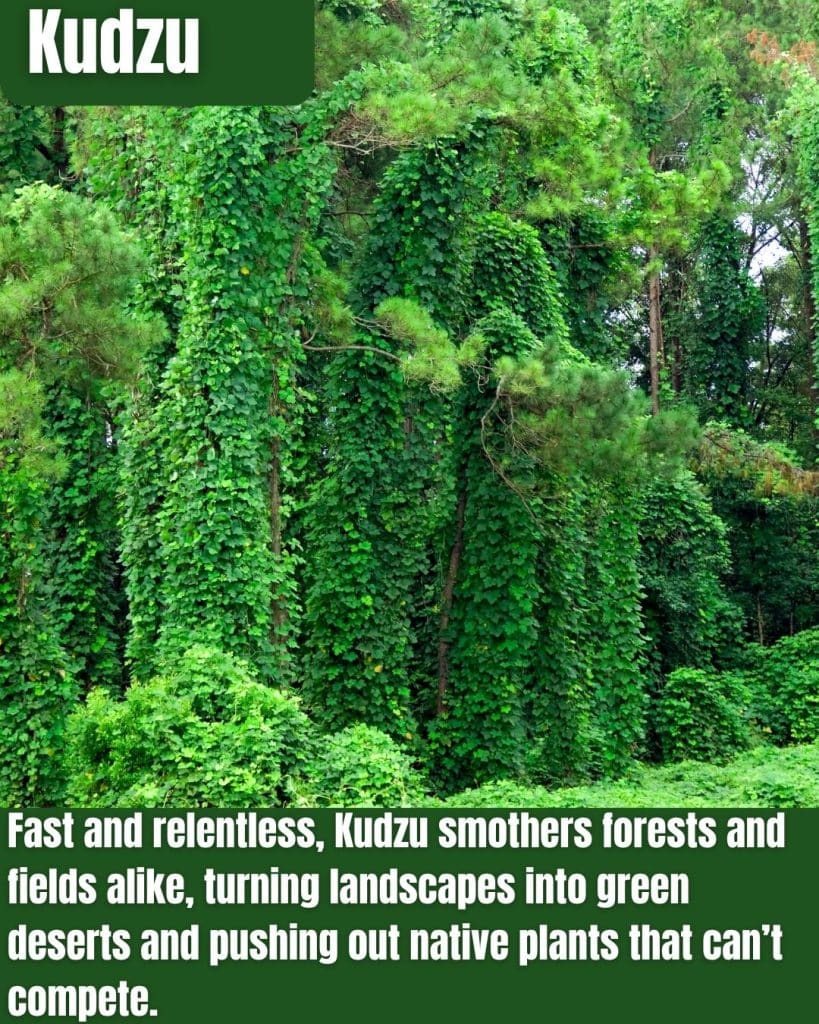
- Known as “the vine that ate the South,” Kudzu can grow up to a foot per day, quickly covering trees, buildings, and anything in its path.
- Originally introduced in the 1800s to control soil erosion, it has since become one of the most aggressive invasive plants in the U.S.
- Kudzu shades out native plants by blocking sunlight and steals nutrients from the soil, choking out entire ecosystems.
The “vine that ate the South”! This green monster blankets trees, houses, and even old cars, turning them into spooky jungle sculptures.
It’s like Georgia’s own sci-fi movie villain, spreading faster than gossip.
3. Island Apple Snail (Pomacea maculata)
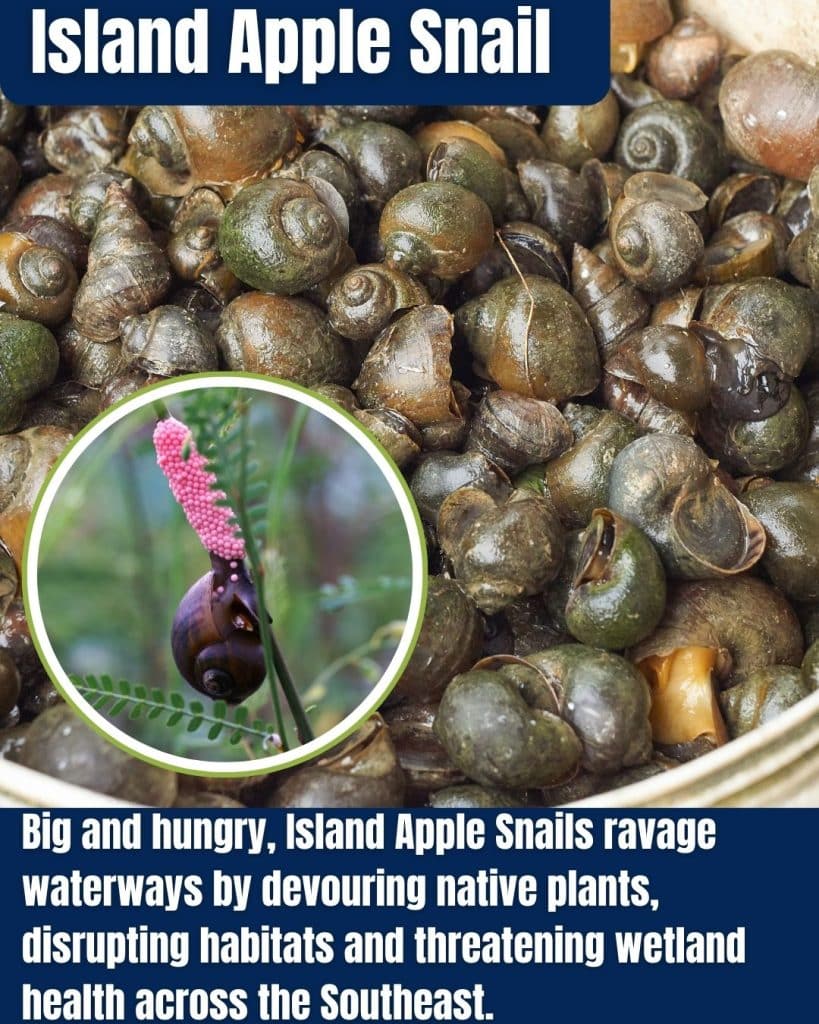
- This large freshwater snail can grow up to 4 inches across, making it one of the biggest snails in U.S. waters.
- Island Apple Snails voraciously eat aquatic plants, damaging wetlands and choking out native vegetation.
- They lay bright pink egg clusters above the waterline, which are hard to miss and signal a growing infestation.
Meet the snail with a serious attitude problem. These South American invaders chomp through aquatic plants and leave creepy pink egg clutches everywhere.
Oh, and they carry a parasite that’s bad news for humans. Yikes!
4. English Ivy (Hedera helix)
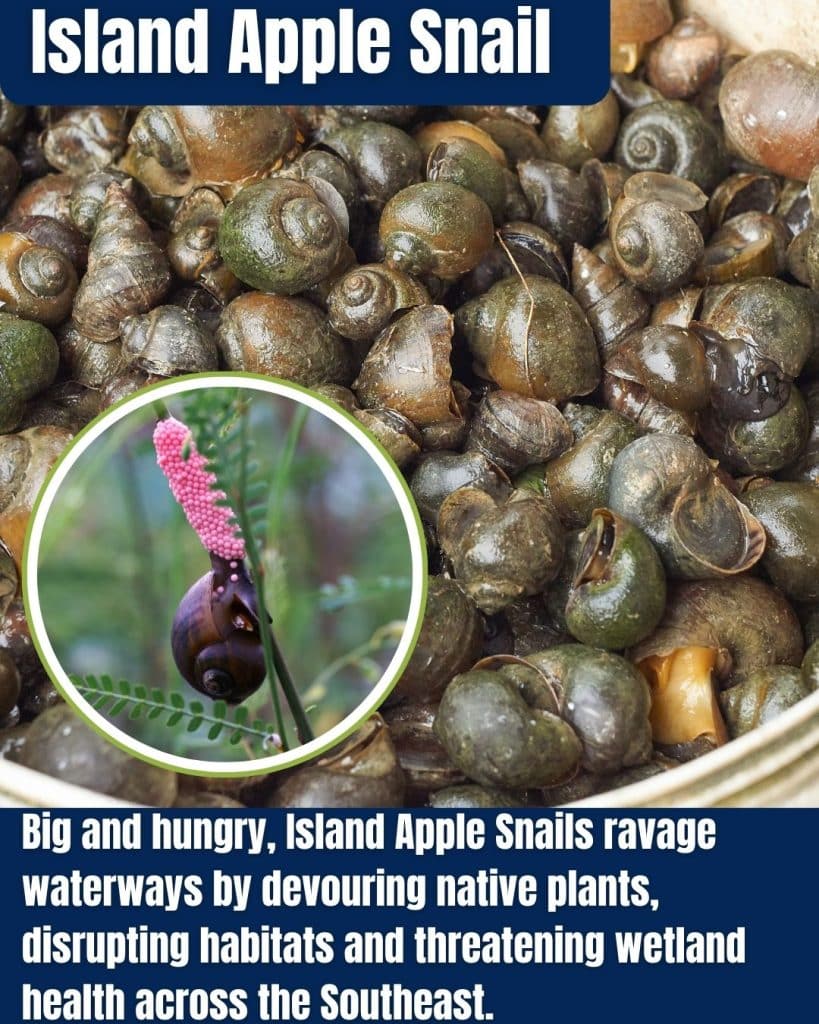
That “cute” ivy climbing your fence? It’s a forest strangler!
This European escapee smothers trees and native plants like it’s auditioning for a villain role in a nature documentary.
5. Yellow-Legged Hornet (Vespa velutina)
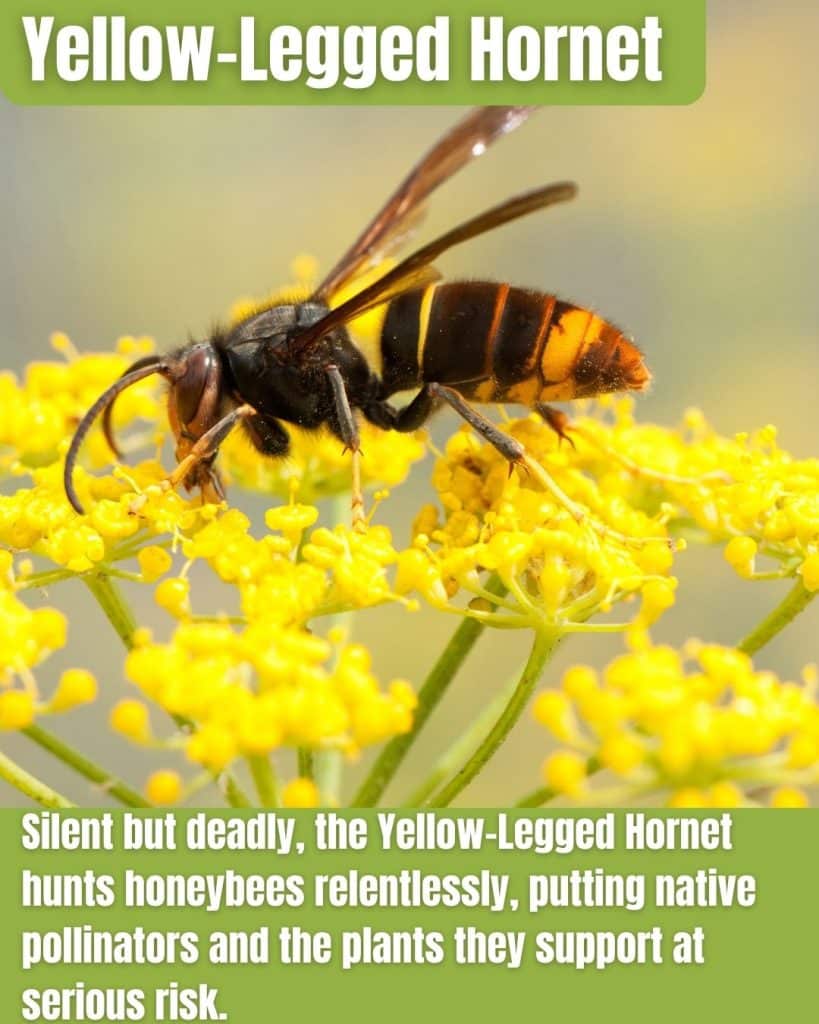
- This invasive hornet is about 1 inch long, with a distinctive dark body and bright yellow legs that make it easy to spot.
- It’s a fierce predator of honeybees, threatening local pollinators and disrupting ecosystems.
- Originally from Asia, it has rapidly spread across parts of the U.S. and Europe since its accidental introduction.
New to Georgia in 2023, these hornets are honeybee nightmares.
They raid hives like tiny pirates, threatening our $430 million pollinator crops. Bee-ware, Georgia!
6. Chinese Tallowtree (Triadica sebifera)

- Known as the “popcorn tree” for its white, waxy seed pods, Chinese Tallow grows fast and spreads easily in wetlands and fields.
- It releases chemicals into the soil that inhibit native plants from growing, giving it a serious competitive edge.
- This tree creates dense stands that alter habitats, making it hard for wildlife and native plants to thrive.
This tree’s like that friend who takes over your group chat.
It invades wetlands and forests, pushing out native species with its fast growth and pretty (but problematic) leaves.
7. Fallow Deer (Dama dama)
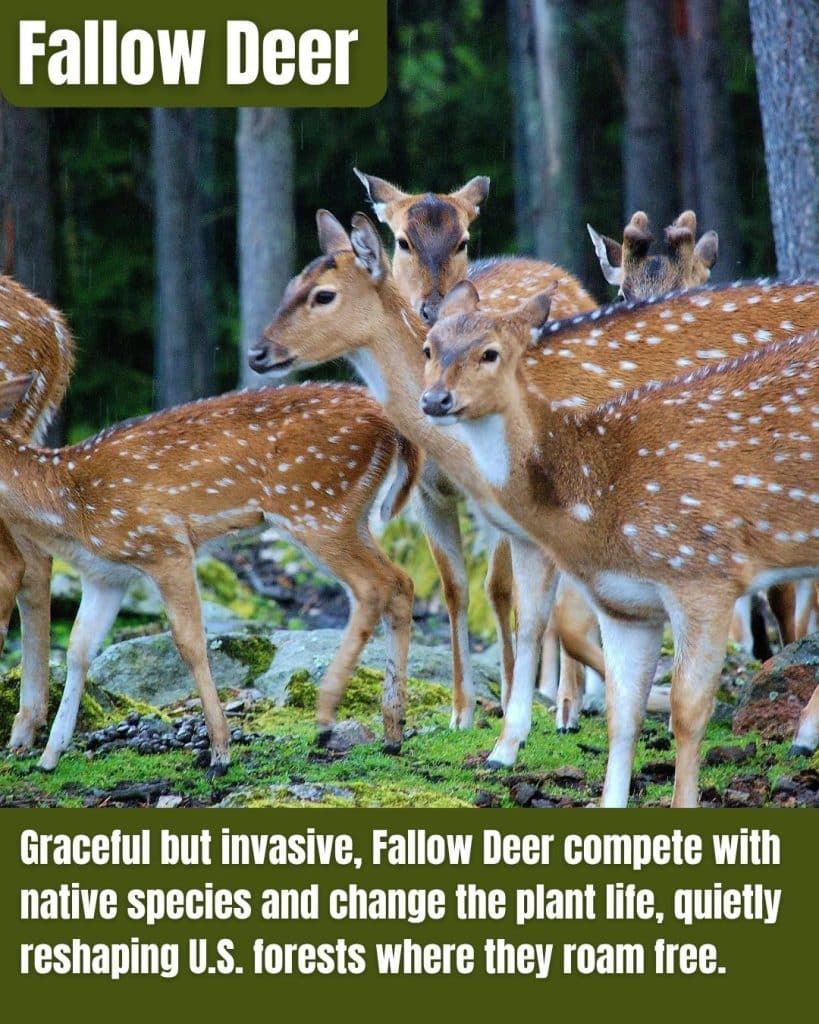
- Fallow Deer have a spotted coat year-round, making them stand out from native deer species in the U.S.
- Originally from Europe, they were introduced for hunting but have since spread into wild areas, competing with native deer.
- Their grazing habits can alter plant communities, impacting forest undergrowth and local ecosystems.
These elegant deer from Turkey sound fancy, but they’re hogging resources on Georgia’s coast.
Introduced for hunting, they’re now outcompeting our native wildlife.
8. Japanese Stiltgrass (Microstegium vimineum)
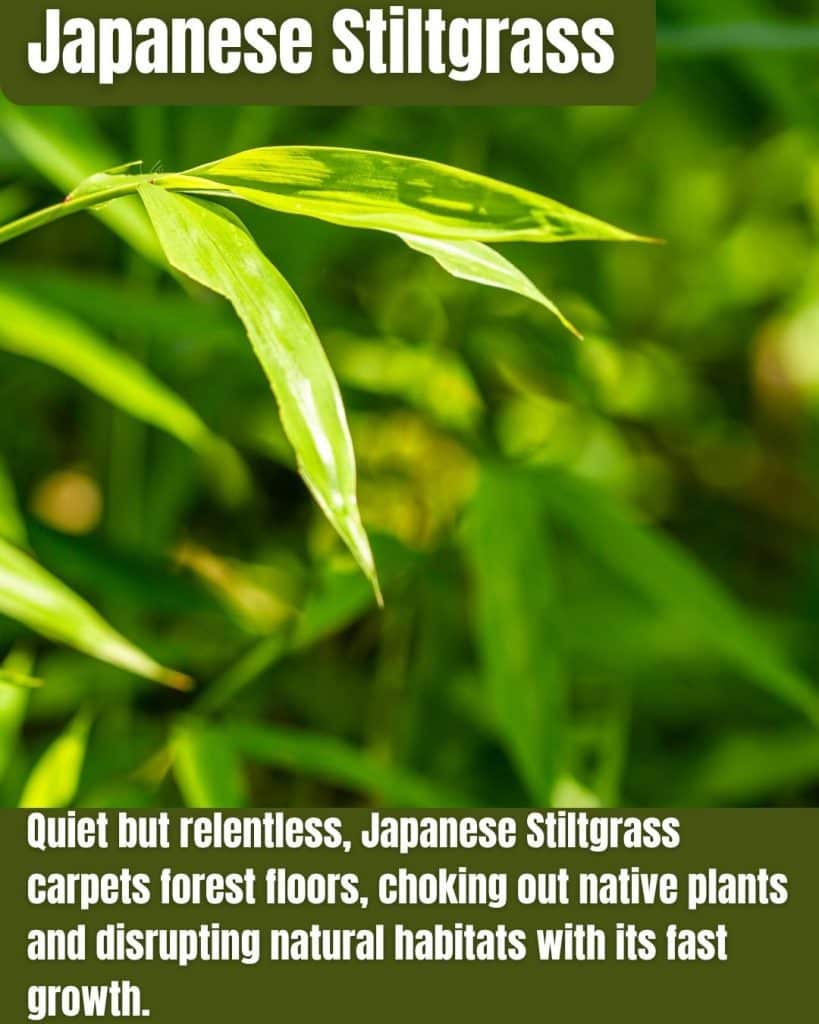
- This invasive grass spreads rapidly in shady forests and disturbed areas, forming dense mats that block sunlight.
- It outcompetes native plants by growing faster and stealing nutrients, killing them in the process.
- Seeds can hitch rides on shoes, tires, and animals, helping it spread quickly across landscapes.
This sneaky grass sneaks into forests and lawns, crowding out native plants and even messing with bird nests.
It’s like the ultimate gatecrasher at nature’s party.
9. Zebra Mussel (Dreissena polymorpha)
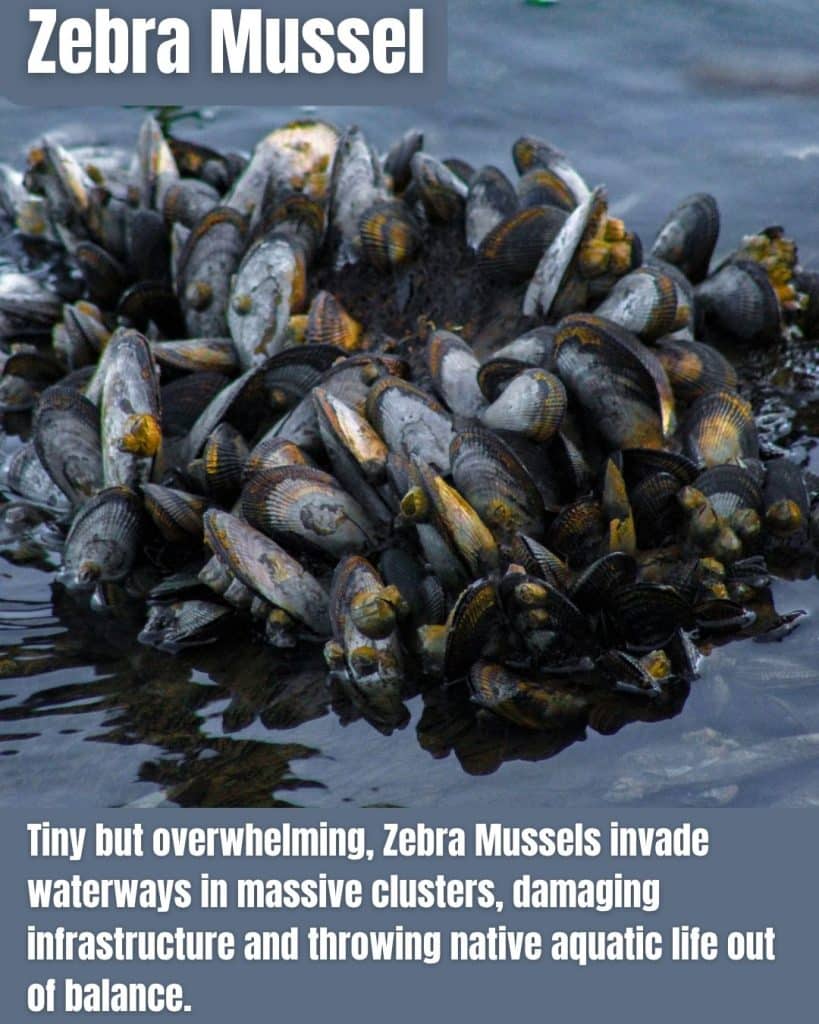
- Zebra mussels are small, about 2 inches long, with distinctive black-and-white striped shells.
- They attach to hard surfaces in huge numbers, clogging water pipes, boat hulls, and native mussel beds.
- These mussels filter massive amounts of water, disrupting ecosystems by removing plankton that native species rely on.
Tiny but mighty, these mussels clog pipes and gobble up food meant for native fish in places like Lake Lanier.
Check your boat, or you might be spreading these bad boys!
10. Wisteria (Wisteria sinensis)
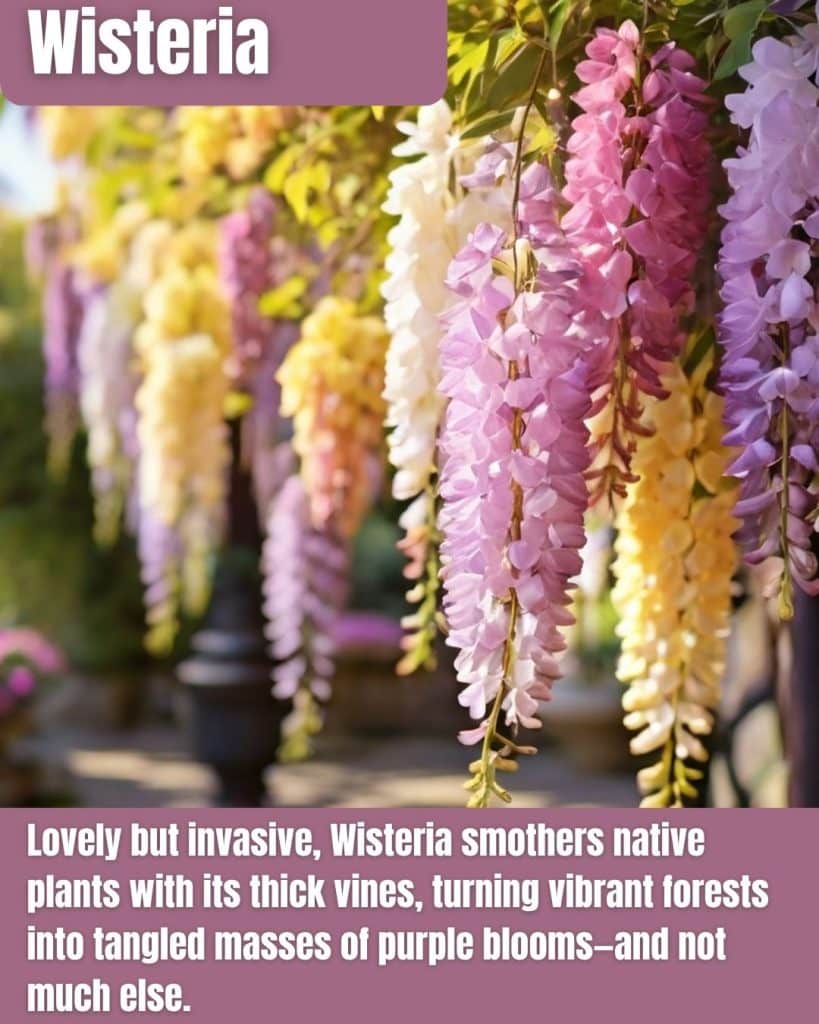
That gorgeous purple vine in your neighbor’s yard? It’s a tree-strangling beast!
This Asian import wraps around natives like it’s trying to win a wrestling match.
11. Asian Longhorned Beetle (Anoplophora glabripennis)
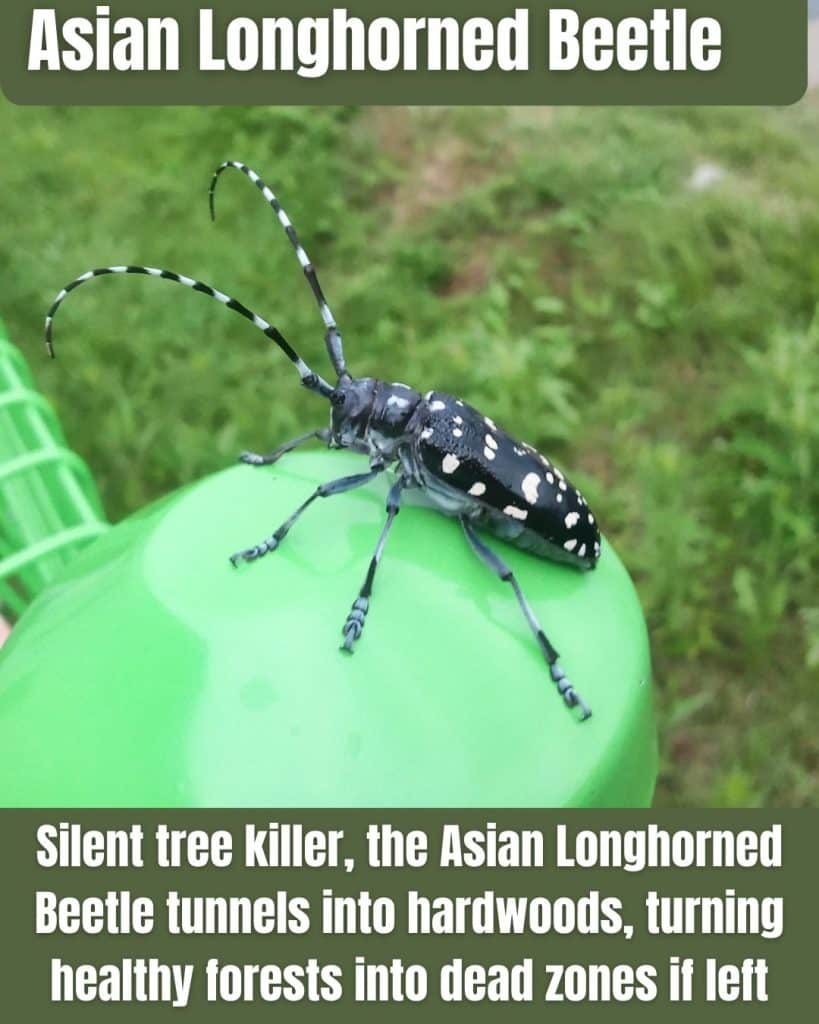
- This shiny black beetle has striking white spots and long, banded antennae that can be twice its body length.
- It bores deep into hardwood trees like maple and elm, causing deadly damage that can kill the trees.
- Native to Asia, it was accidentally introduced in the U.S. through wood packaging materials.
These beetles are tree assassins, tunneling through hardwoods and leaving destruction in their wake.
Keep an eye out… they’re a threat we don’t want spreading!
12. Mimosa (Albizia julibrissin)
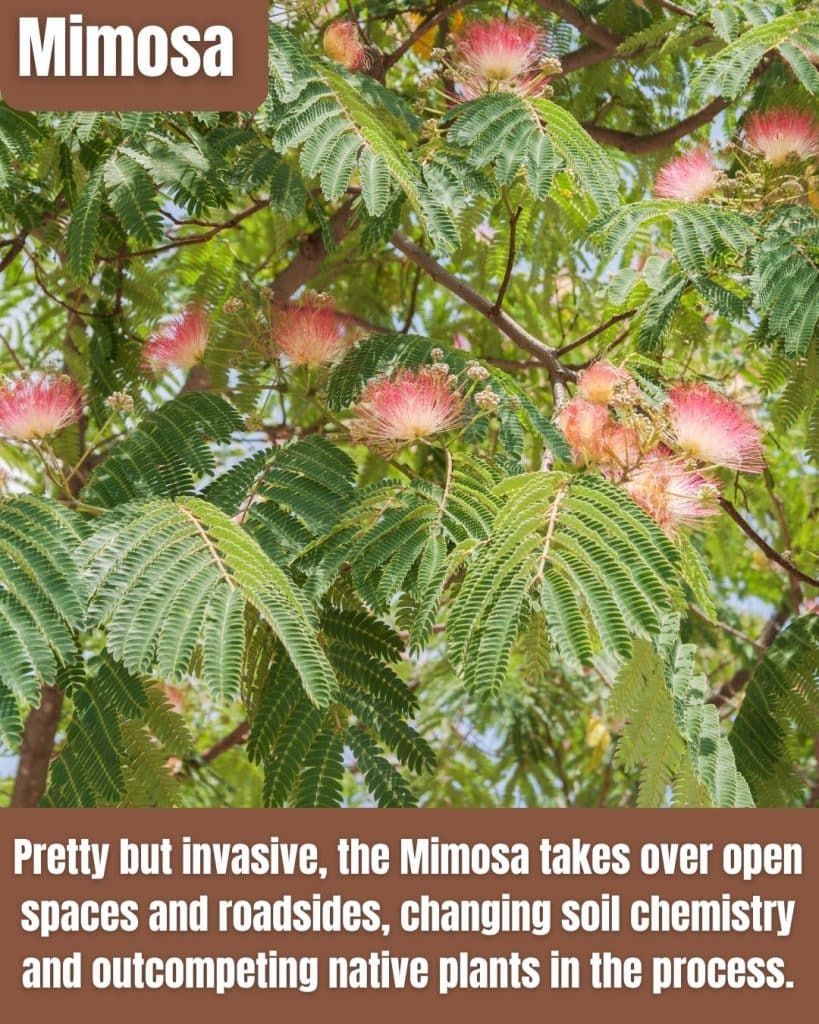
- Mimosa trees have delicate, fern-like leaves and fluffy pink “powder puff” flowers that bloom in summer.
- They grow quickly and spread easily, often invading roadsides, fields, and open woods.
- Mimosa fixes nitrogen in the soil, which can disrupt native plant communities used to poorer soils.
With its fluffy pink flowers, this tree looks sweet, but it’s a fast-spreading bully that takes over disturbed areas.
Don’t let its charm fool you! ( I have a huge one on my property and my wife LOVES it. So every August I have to go and pull about 50 Mimosa sprouts).
13. Cane Toad (Rhinella marina)
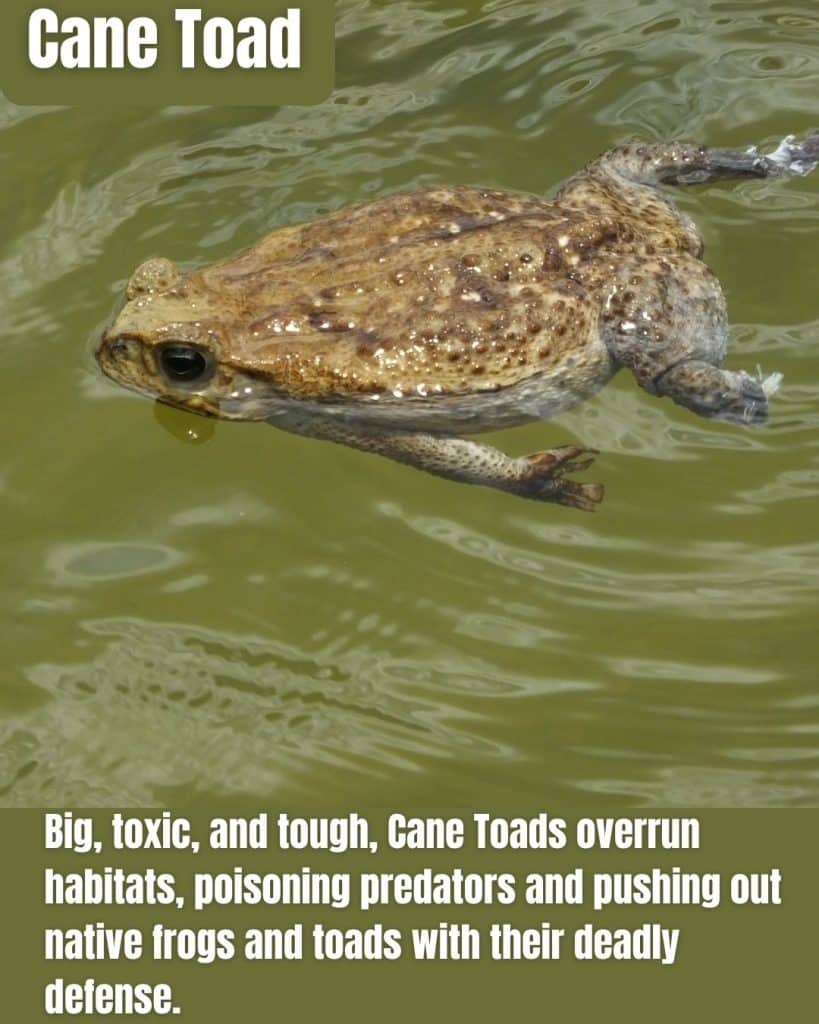
- Cane Toads can grow up to 7 inches long, making them one of the largest toad species in the U.S.
- They secrete a powerful toxin from their skin that can poison pets, wildlife, and even humans.
- Originally introduced to control pests, they’ve become invasive, outcompeting native amphibians and upsetting ecosystems.
These toads are toxic… literally! Their poison can take out pets and wildlife, and they’re munching on native critters’ food.
Not the kind of guest you want at your BBQ.
14. Non-native Privet (Ligustrum spp.)

- Privet shrubs grow fast and form dense, impenetrable thickets that shade out native plants.
- Birds love their berries, helping spread seeds far and wide across forests and fields.
- Originally planted as hedges, privets have escaped gardens and become widespread invaders.
Covering nearly 717,000 acres, privet’s like the ultimate nosy neighbor, forming thickets that block out native plants.
It’s in almost every Georgia county!
15. Spotted Lanternfly (Lycorma delicatula)
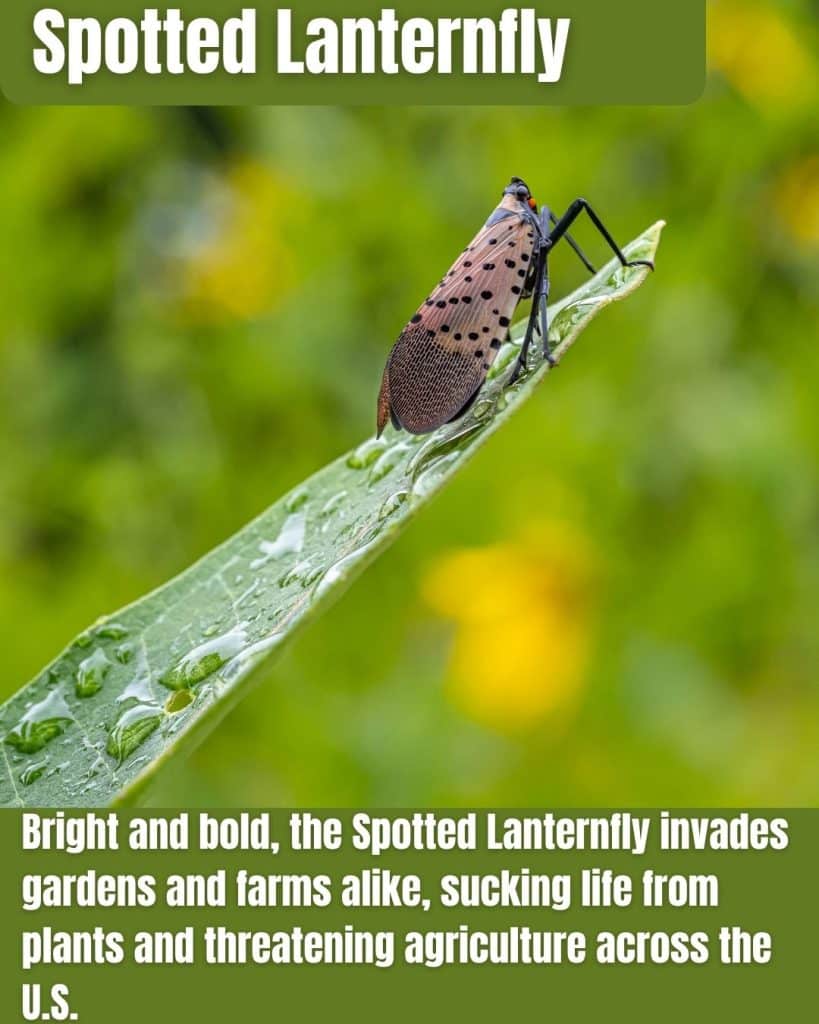
- This colorful bug has distinctive black spots on translucent wings and bright red underwings when flying.
- It feeds on over 70 plant species, including grapes, maples, and fruit trees, causing serious damage to crops and forests.
- Originally from Asia, it spreads quickly by hitching rides on vehicles, firewood, and outdoor gear.
New to Georgia in 2024, this colorful bug is a grape-killer, leaving sticky mold everywhere.
If you see one, squash it (gently, of course) and report it!
16. Japanese Climbing Fern (Lygodium japonicum)
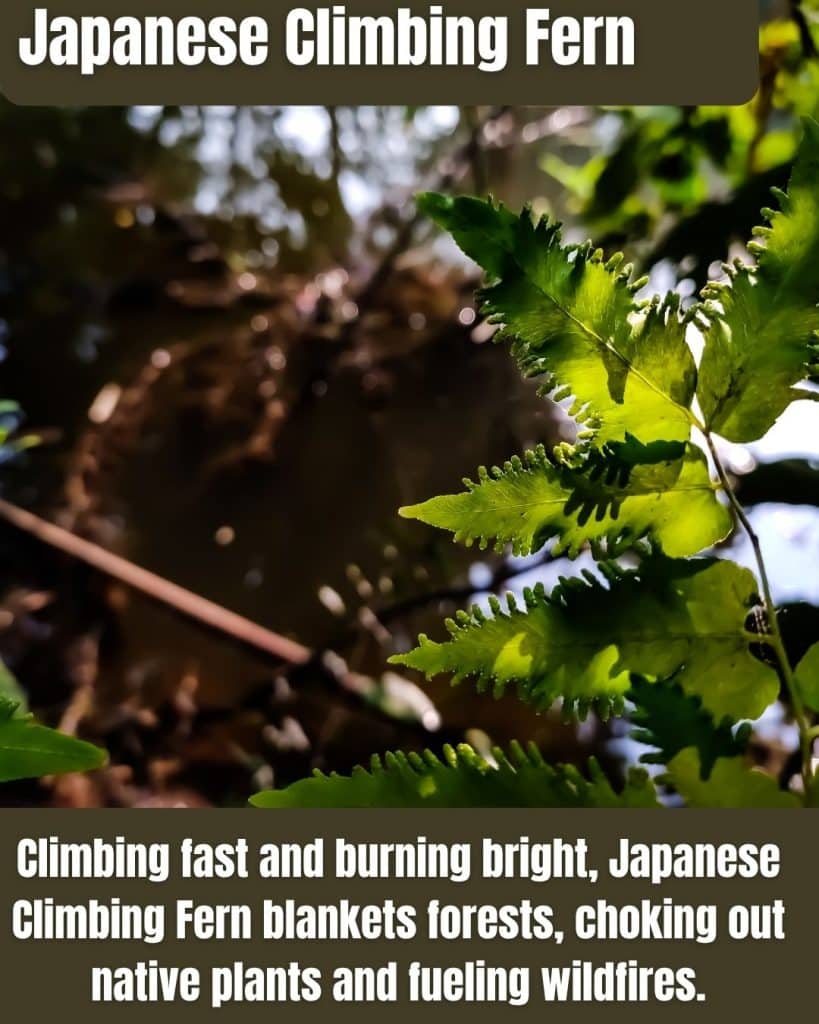
- This invasive fern can grow up to 90 feet by climbing over trees and shrubs, forming thick mats that block sunlight.
- It spreads both by spores and by creeping stems, making it hard to control once established.
- Japanese Climbing Fern increases wildfire risks by creating dense, dry foliage that burns easily.
This fern climbs like it’s training for the plant Olympics, smothering native vegetation.
It’s a green menace you don’t want in your backyard.
17. Nine-Banded Armadillo (Dasypus novemcinctus)
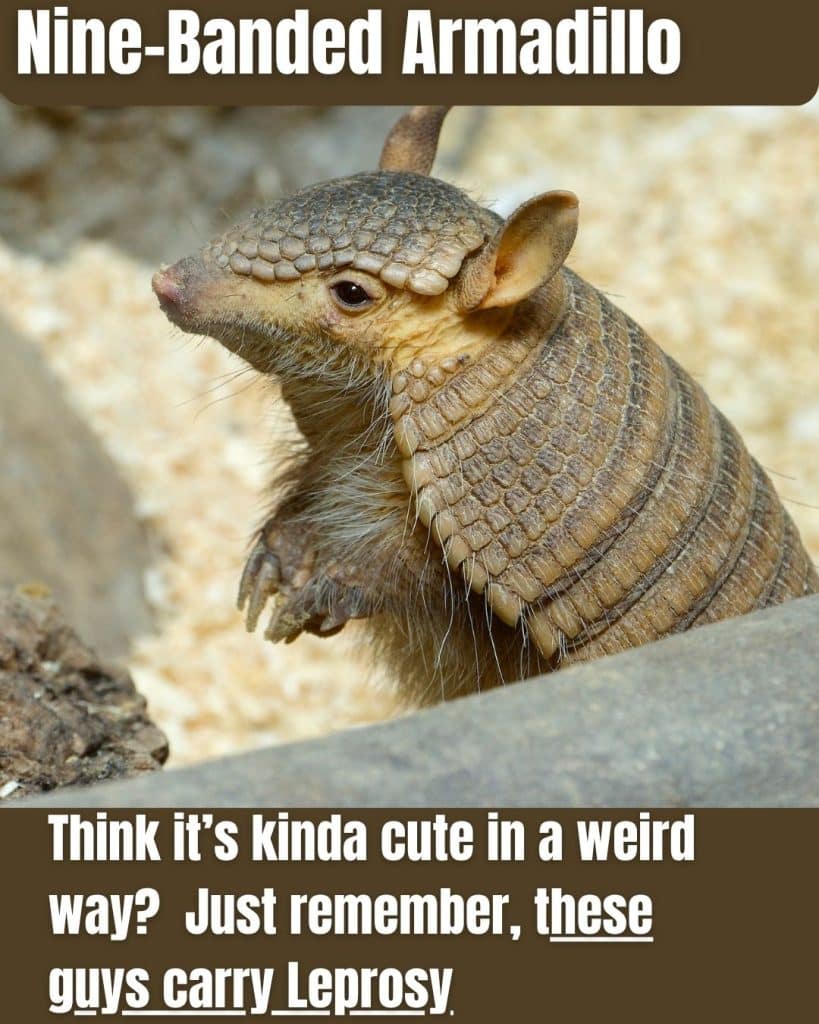
- The Nine-Banded Armadillo is the only armadillo species that naturally expanded into the U.S., now found across the Southeast and beyond.
- It digs burrows and roots through soil, which can disrupt lawns, gardens, and native animal habitats.
- They can carry leprosy bacteria, though transmission to humans is very rare.
These armored weirdos are in all 159 Georgia counties, digging up plants and even carrying leprosy. Yep, you read that right. Keep your distance!
18. Sericea Lespedeza (Lespedeza cuneata)
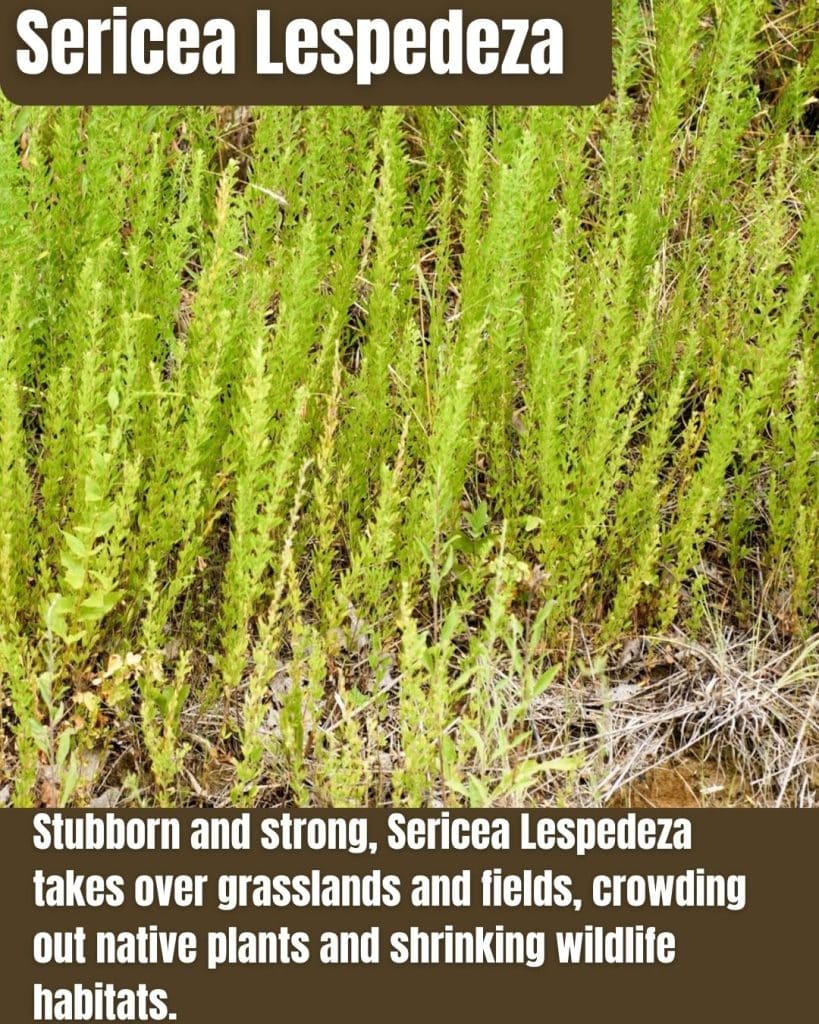
- This tough perennial was planted for erosion control and forage but quickly turned invasive across pastures and prairies.
- It forms dense stands that outcompete native grasses and wildflowers, reducing habitat diversity.
- Sericea Lespedeza is hard to control because it resists many common herbicides and recovers quickly after cutting.
This tough-as-nails plant takes over fields and roadsides, elbowing out native grasses. It’s like the ultimate plant bully.
19. Chinese Privet (Ligustrum sinense)
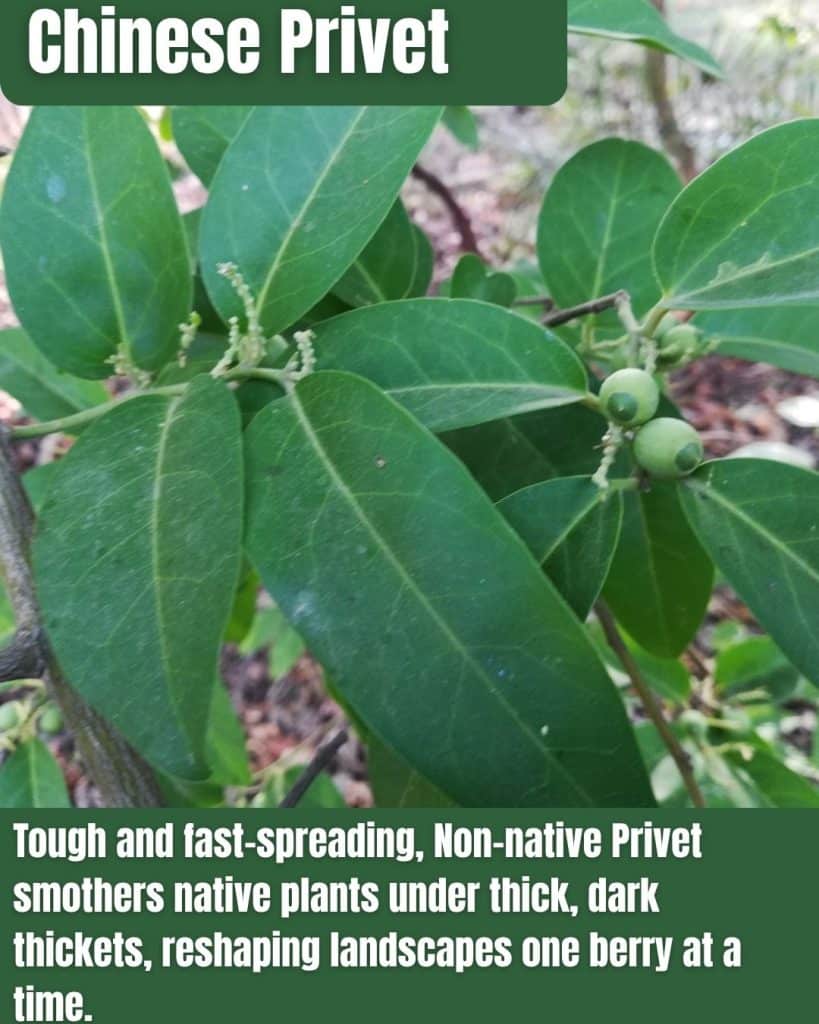
Another privet on the list because it’s that bad. Found in 96% of counties, it chokes out forests and streams like nobody’s business.
20. Emerald Ash Borer (Agrilus planipennis)
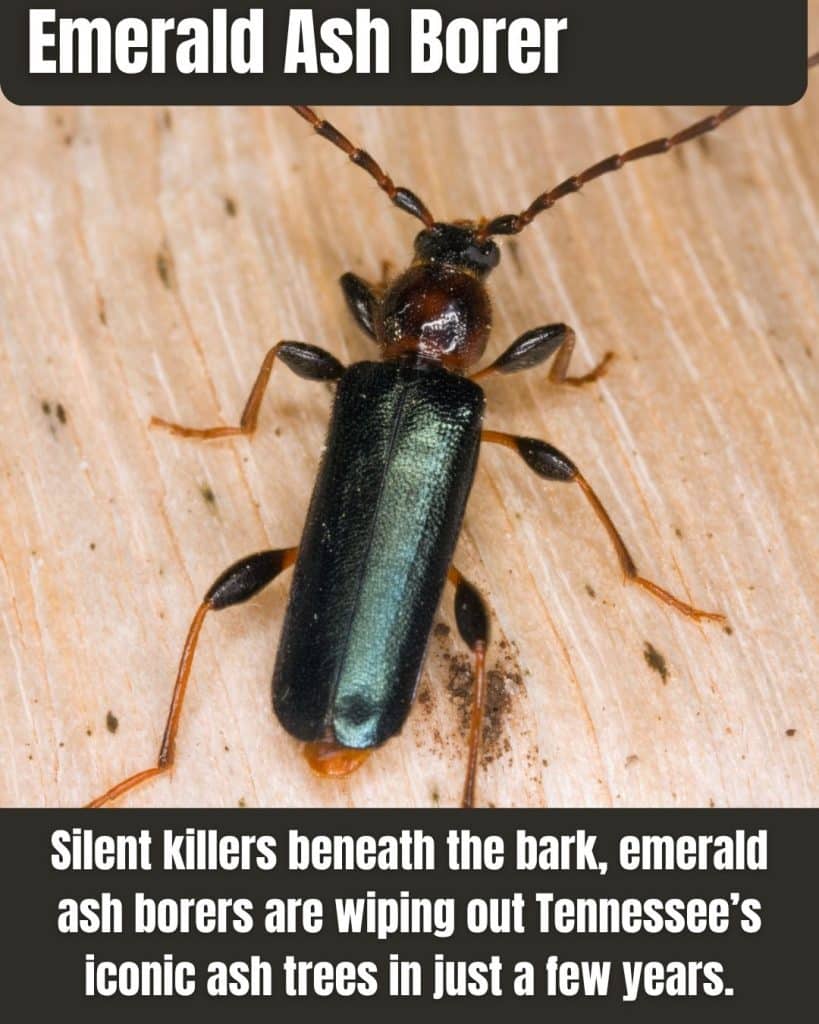
- This tiny, metallic green beetle is about half an inch long but can kill an ash tree in just a few years.
- Its larvae tunnel under the bark, disrupting the tree’s ability to transport water and nutrients.
- Since its discovery in the U.S. in 2002, it has killed millions of ash trees across North America.
This shiny green beetle is an ash tree assassin, wiping out entire stands.
If you’ve got ash trees, keep an eye out for this pest!
21. Japanese Honeysuckle (Lonicera japonica)
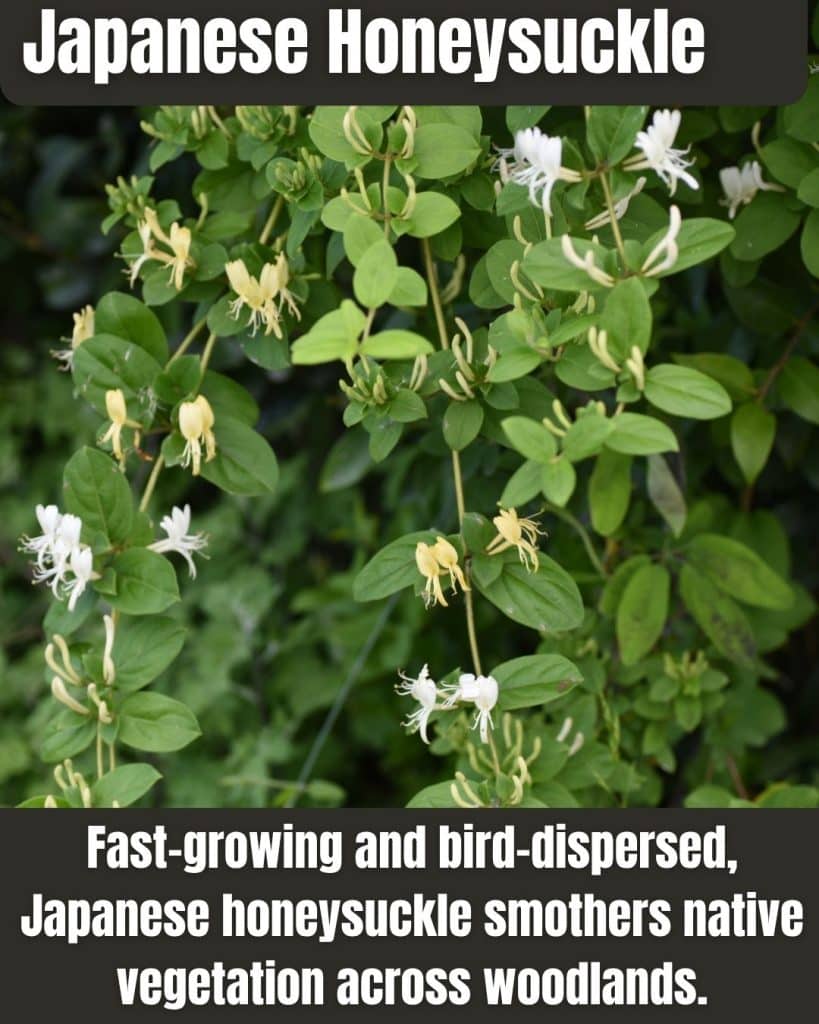
- This fast-growing vine produces sweet-smelling white to yellow flowers that attract pollinators early in spring.
- It spreads aggressively by runners and seeds, quickly covering native plants and trees.
- Once established, it can smother entire forests and fields, blocking sunlight and choking out native species.
This vine’s sweet scent hides its dark side; it strangles trees and covers forests, leaving native plants in the dust.
Not so sweet now, huh?
22. Brown Anole (Anolis sagrei)
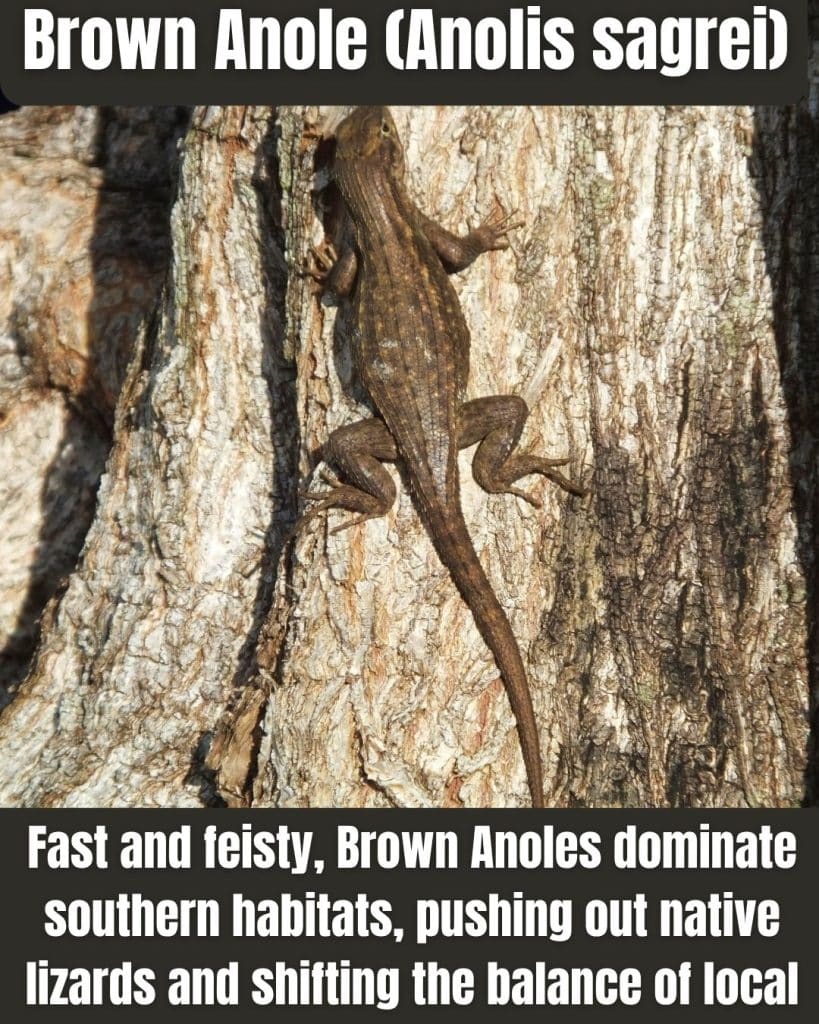
- Brown Anoles are small lizards about 5 to 8 inches long, known for their quick movements and dewlap displays.
- Originally from the Caribbean, they’ve spread widely in the southern U.S., competing with native lizards for food and territory.
- They eat a wide range of insects but also outcompete native anoles, disrupting local ecosystems.
These little lizards from the Caribbean are pushing out our native green anoles.
They’re like tiny invaders taking over Georgia’s highways and backyards.
23. Kudzu Bug (Megacopta cribraria)
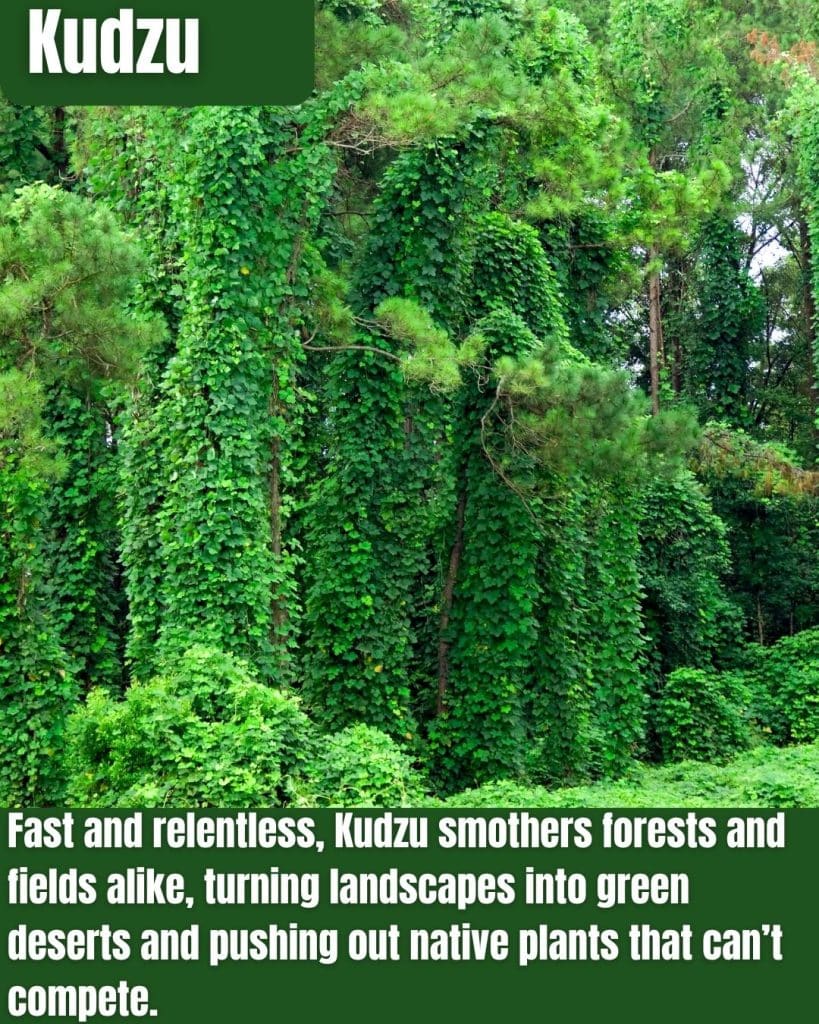
Don’t let the name fool you; these bugs don’t eat kudzu; they destroy soybeans and alfalfa.
They caused a stink (literally) for Georgia’s crops in 2012.
24. Argentine Black and White Tegu (Salvator merianae)
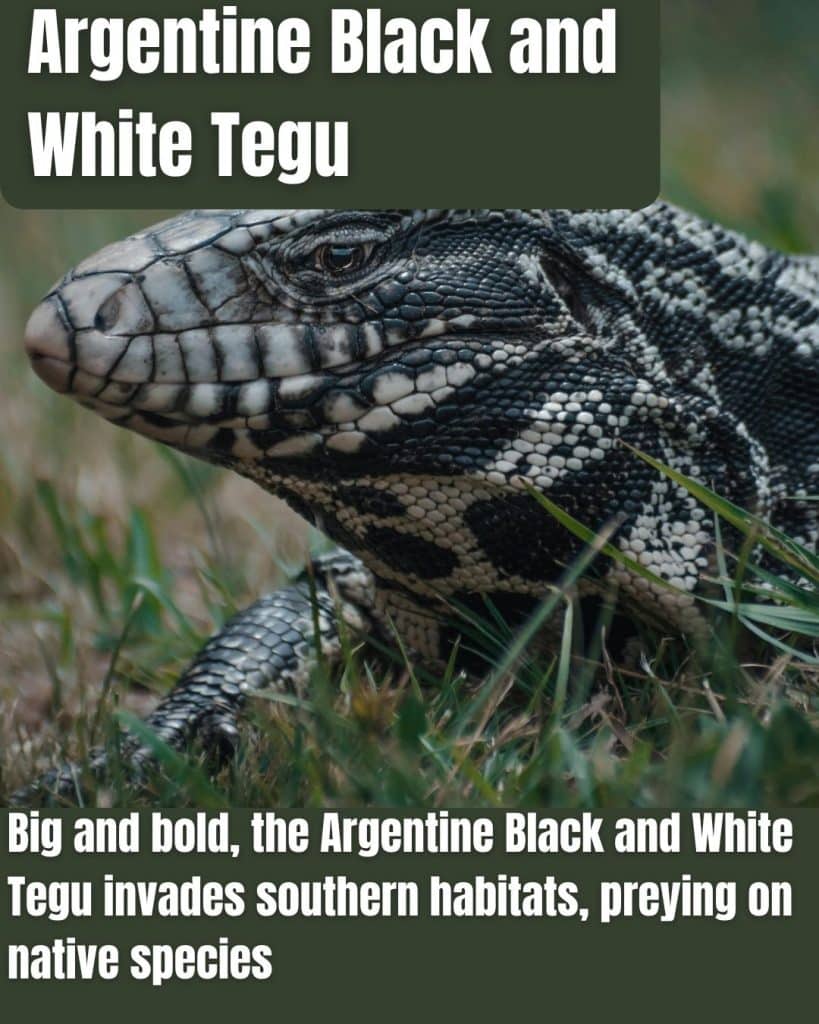
- This large lizard can grow up to 4 feet long and is known for its striking black and white patterned skin.
- Native to South America, it’s an aggressive omnivore that eats eggs, small animals, and plants, threatening native wildlife.
- Tegus are excellent burrowers and swimmers, helping them spread and adapt to new environments quickly.
These big lizards in Toombs and Tattnall counties are eating bird and reptile eggs like they’re at a buffet.
Plus, they might spread parasites. Nope, not cool!
25. Skunk Vine (Paederia foetida)
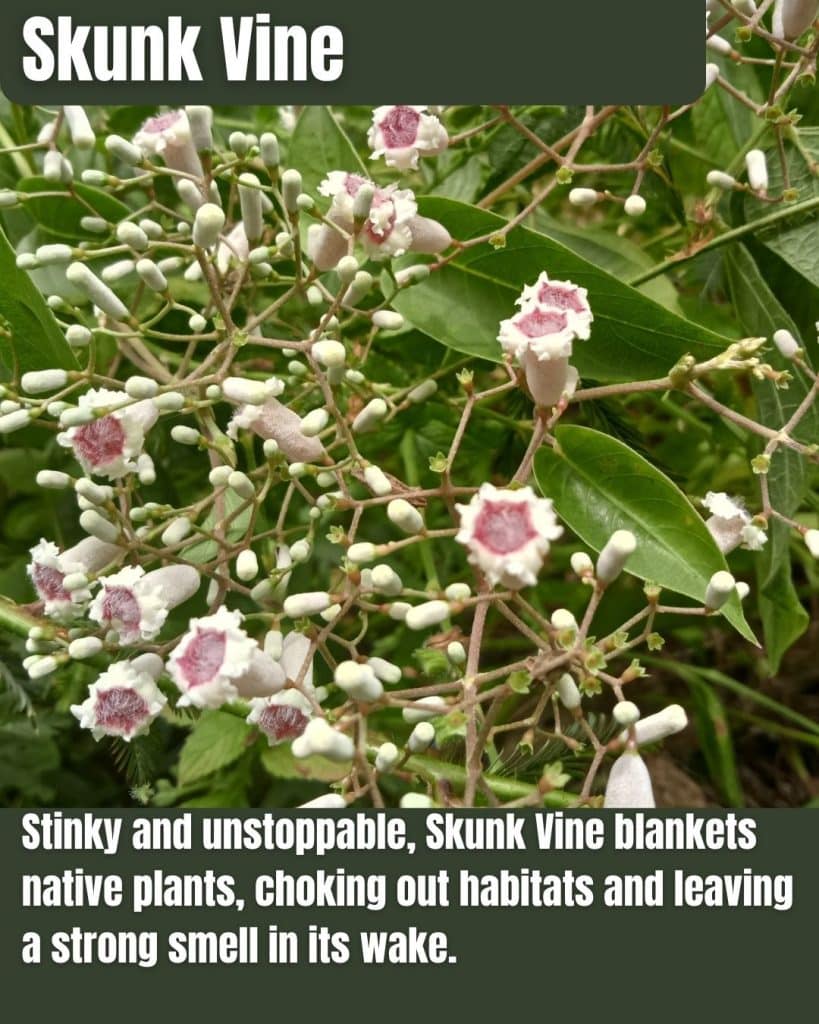
Smells bad, grows fast, and chokes out natives; this vine’s a triple threat.
It’s like the plant version of that one friend who always overstays their welcome.
Why Should You Care? 🤔
These invaders are costing Georgia billions in damages—think ruined crops, damaged forests, and even health risks (looking at you, armadillos and apple snails).
They’re pushing out our native plants and animals, making our ecosystems less vibrant. But you can help!
What Can You Do?
- Don’t plant these bad guys! Skip invasive ornamentals like mimosa or English ivy for your garden.
- Report sightings. Spot a spotted lanternfly or tegu? Tell the Georgia DNR at https://www.gainvasives.org or call their Wildlife Resources Division.
- Clean your gear. Don’t spread zebra mussels, boats and fishing equipment.
- Pull or cut. If you’ve got kudzu or privet in your yard, yank it out or use safe herbicides (check with local experts first!).
- Spread the word! Share this post to let your friends know what’s at stake.
Let’s keep Georgia’s forests, rivers, and farms thriving! 🌳💦 Tag a friend who needs to know about these sneaky invaders, and let’s protect our state together.
What’s the weirdest invasive you’ve seen in Georgia? Drop it in the comments! 👇 #SaveGeorgiaNature #InvasiveSpecies